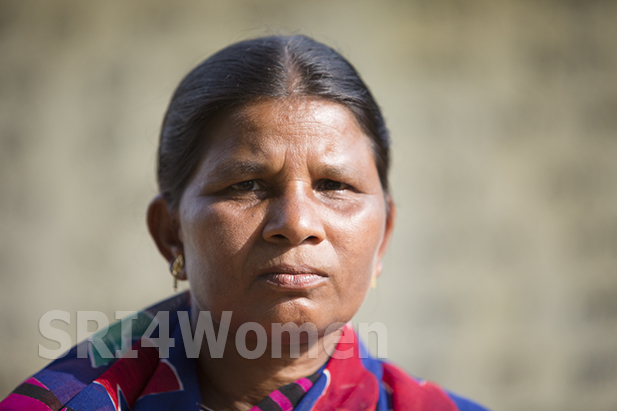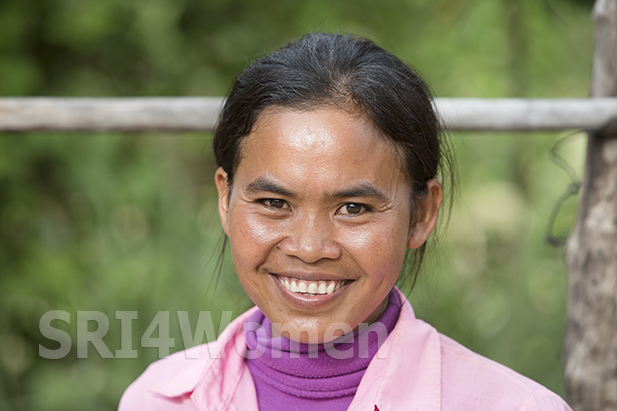It’s dusk and that point in the day when all is still but for the occasional distant clatter of pans or the whoops of a few children still at play. The sun stretches shadows across the fields as the cows are being brought in from pasture.
From nowhere, the tranquillity is shattered by the blast of a megaphone that emerges atop a 4 x 4: “Vote Nilima Topno!! Vote Ath-Kosia!!” The vehicle sweeps to a halt outside our building and three women climb out, all appear bristling with election fever.
They have been on the campaign trail for some time and are ready with their pitches:
My name is Nilima Topno, I am the President of a People’s Organisation called Ath-Kosia Tribal People’s Organisation.
Namaskar … My name is Ahalya Sa and I am working with the CIRTD team in Sundergar District.
Namaskar … I’m Cicilia Kandulna and I too work with CIRTD.
“Our organisation is 25,000 people strong and fights for indigenous people’s rights,” explains Nilima. “We started out with the aim of getting rights on forest land.”
Orissa state in eastern India is home to 62 different tribal groups, the vast majority are forest dwellers who rely on forest land for their living.
Across India, there are 250 million forest dwellers. Most of them are so marginalised they do not have any recognised land rights or access to government support. This means their lives are precarious. They could get evicted from the land at any time, cannot access vital benefits and cannot even register their children in schools.
Ahalya Sa explains what her organisation is working towards: “Those who depend exclusively on the land and forest to earn their livelihood need a ‘record of rights’ – or land title – to give them some sort of security. They have that right under the ‘Forest Right Act of 2006’, which states that individual families can claim title on the land that they have been cultivating for their living.”
Unfortunately, for a vast number of those who have such rights, obtaining their title certificate is not so easy. The Centre for Integrated Rural and Tribal Development, CIRTD, is helping members of local tribes here understand that they have such rights and how to apply for them. In Orissa, progress has been very slow. “We have managed to get titles for 2000 of our families,” says Ahalya, “and now we are continuing the struggle so that all 25,000 of our members can get titles.”
Meanwhile CIRTD is also working with Ath-Kosia to help members get the most out of the land and their forest resources. Much work has gone into training people on how to improve their agricultural techniques and increase the nutritional content of their diets. And in this they have concentrated on providing support to the most vulnerable within these already marginalised and deprived communities.
“I focus on the problems and struggles of single women,” explains Cecilia. “There are many types of single women such as widows, spinsters, divorcees and physically challenged girls.” In culturally traditional communities, like here in Sundergar in the north of Orissa, the status of ‘single woman’ is a badge of shame. “These are people in our society who suffer the most,” continues Cecilia “they are the most deprived but unfortunately there are no specific government schemes for them.”
Cecilia, Ahalya and Nilima have been working with CIRTD to encourage these women that there is strength in unity and that practicing agricultural techniques that are high yielding and low cost, as well as less physically demanding, will help them gain some independence of their own so they do not rely on the families and even communities that might reject them.
This is where SRI has proven itself to be highly effective. The System of Rice Intensification is a way of planting rice that requires less seed, smaller seedlings, favours indigenous varieties and organic inputs while producing higher yields and more nutritious crops.
All these factors also have an important impact on women’s health: “Talking with doctors and according to what I have seen for myself” says Nata Mishra, the founder of CIRTD, “most women suffer from back pain because they have to bend for 8-10 hours a day to transplant their rice. And they do this regularly.”
He goes on to explain that there are a number of advantages of working with SRI that can really help to eliminate the physical hardship that conventional rice growing typically brings. As SRI requires up to 90% fewer seedlings, which are much smaller and lighter, the method greatly reduces the arduous physical labour normally required.
“And also,” continues Mishra, “many are developing cervical cancer and breast cancer which I think may be from inhaling pesticides. I think there is a serious need for scientific study into this problem.”
Nilima agrees that SRI has real physical benefits: “We bend over to transplant much less now. So, our problems with body pain have been reduced. And we use a weeding machine, which means we can stand up to weed instead of spending all day bent over uprooting weeds with our hands.
Nilima points out that another benefit of adopting SRI is that because it frees up their time and workload, members of her association have been able to diversify their crops: “Now we also grow pigeon pea, black gram, green gram. And different types of vegetables. And we eat all this produce. So, we women and our children are now eating much more nutritious food. We eat organic and it gives us more energy. I feel really happy to see these all these positive changes that we’ve worked hard for.”
Evidently these marginalised communities in Sundergar are doing all they can to improve their lives while they wait for forestry officials to follow government legislation and recognise their established rights to their forest lands.
CIRTD, the Centre for Integrated Rural and Tribal Development is supported by Action Aid India.







